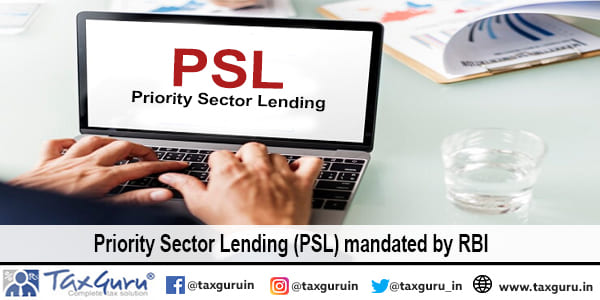Introduction & Basic Understanding:
√ Priority Sector means those sectors which the Government of India and Reserve Bank of India consider as vital for the development of the basic needs of the country and are to be given priority over other sectors.
√ Priority Sector Lending (PSL) is a system that encourages banks to lend a certain portion of their funds to specific sectors of the economy.
√ These sectors typically include agriculture, small-scale industries, education, housing, and micro-enterprises and others.
Here’s a breakdown of challenges & criticisms of PSL and why it’s important:
Why is Priority Sector Lending Important?
√ Rural Development: PSL contributes to rural development by providing credit to farmers, artisans, and other rural enterprises, which are the backbone of rural economies.
√ Financial Inclusion: It promotes financial inclusion by encouraging banks to reach out to underserved and marginalized sections of society, including women, minorities, and low-income households.

√ Inclusive Growth: PSL ensures that those sectors which are crucial for the economy and society, receive adequate credit support especially those involving small borrowers and rural areas.
√ Helps Small Businesses: Small businesses are like the little engines that keep the economy running. By giving them loans, PSL helps them grow, create jobs, and contribute to the country’s economy.
Challenges and Criticisms of Priority Sector Lending:
√ Risk of Defaults: Sometimes, people who take loans might not be able to pay them back. This can be a problem, especially in sectors that are already struggling.
√ Credit Allocation Issues: It’s essential to ensure that the money allocated under PSL actually reaches the people and areas it’s meant to help.
√ Impact on Profitability: Banks need to make money too. For banks, lending to priority sectors might not always be as profitable as lending to other sectors, potentially affecting their overall profitability.
How does it works?
√ Reserve Bank of India (The regulatory authority) mandates the banks of a country to allocate a certain percentage of their total lending to priority sectors. This percentage varies from country to country and may also differ for different types of banks (public sector banks, private sector banks, co-operative banks, foreign banks & etc.)
√ For example, supposes a bank has ₹500 to lend, the rule might say that ₹40 of it has to go to farming, ₹20 to small businesses, ₹10 to education, and so on.
Conclusion:
√ To conclude with we can say, Priority Sector Lending is a mechanism through which banks are pushed to support key sectors of the economy for inclusive growth and development. While it has its challenges, it plays a significant role in ensuring that the benefits of economic growth reach all sections of society.




